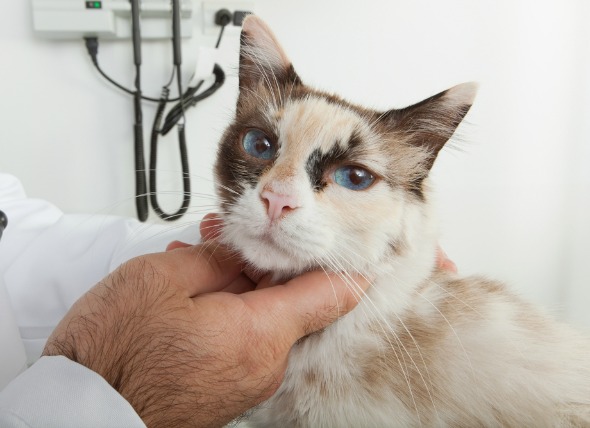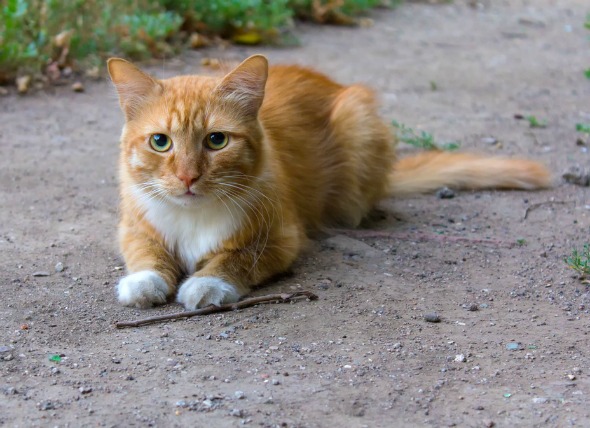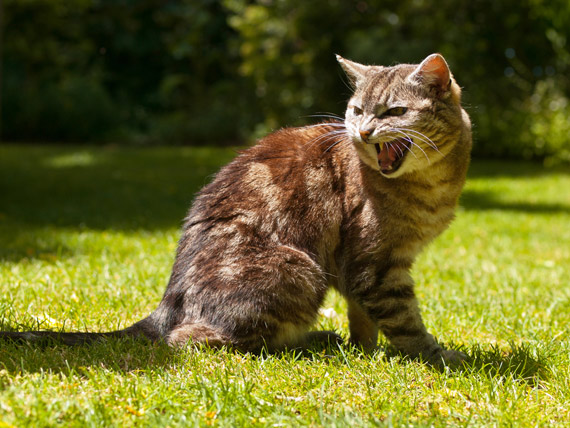If you've just adopted your first cat or kitten, you may find your pet's behavior puzzling at times. Maybe you've never had a cat before, or maybe you've always had dogs. In either case, it is time to learn a little bit about your new kitty's body language, so that you can understand cat behaviors and better communicate with him or her.
To begin, examine the tail. Your cat's tail can show his or her mood. When the tail is relaxed and not moving, the animal is probably relaxed. But if the tail is still and pointing straight up in the air, you cat is probably happy and want to interact with you. The tail is a basic indicator in cat psychology.
Cat's tails are their way of communicating with humans in a quieter way than meowing! When your cat's tail has started "ticking" or moving back and forth, kitty is trying to let you know that he or she is done and needs some alone time. Remember, he or she will give you plenty of warning before they scratch or bite you, so always remain wary of their tail-actions.
Now look at the cat's posture. A cat that is laying down quietly in a ball, or with a paw over its face, is probably sleeping. If the cat is stretched out more, it may be readying itself for play. Cats have very strong opinions about when they wish to interact with humans, and when they don't. Avoiding cat problems therefore requires being observant about the cat's posture, and sensitive to the cat's wishes to play or to be left alone.
Another well known example of cat behaviors is when cats flip over onto their backs, indicating that they are interested in playing or interacting. Be careful, because their tummies are very sensitive and they may scratch at you if you pet them there. With some cats, it is easier to play with them using a toy, which will help keep your hands away from kitty's claw. They sometimes get overexcited while on their bellies and may occasionally, and unintentionally, lash out.
When petting or cuddling your new kitty, you should keep an eye on their tail and posture, as we have discussed. Cat behaviors differ from those of dogs in that sometimes they may change their minds about wanting attention or cuddles. When they do change their mind, they will signal it to you with their tail and posture, so that you can give them some alone time. Remember - cats are wonderful, loving creatures, but they have unique personalities and very specific needs.

 Lymph Node Inflammation (Lymphadenitis) in Cats
Lymphadenitis in Cats
Lymphadenitis is a conditio
Lymph Node Inflammation (Lymphadenitis) in Cats
Lymphadenitis in Cats
Lymphadenitis is a conditio
 Why Do Cats Spray Indoors?
Why Do Cats Spray Indoors?
Why Do Cats
Why Do Cats Spray Indoors?
Why Do Cats Spray Indoors?
Why Do Cats
 Excess Calcium in the Blood in Cats
Hypercalcemia in Cats
Hypercalcemia is characteri
Excess Calcium in the Blood in Cats
Hypercalcemia in Cats
Hypercalcemia is characteri
 Do Cats Get Lonely?
Do Cats Get Lonely?
Do Cats Get Lonely
Do Cats Get Lonely?
Do Cats Get Lonely?
Do Cats Get Lonely
 Aggression in Cats (Overview)
Cats are small, and often become the target of ot
Aggression in Cats (Overview)
Cats are small, and often become the target of ot